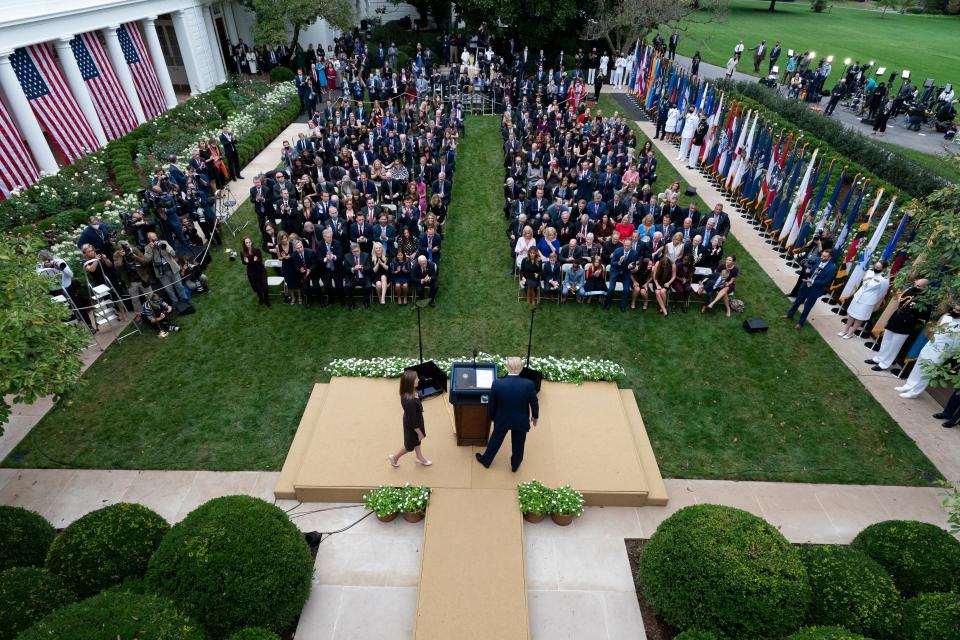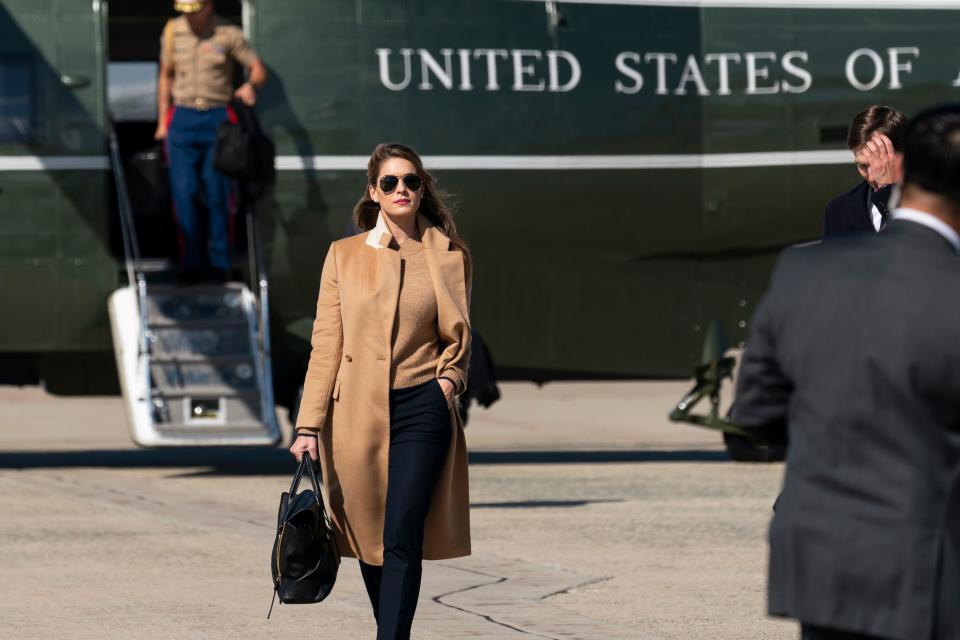Super spreader events: How do they cause COVID-19 outbreaks and is the White House now a hot spot?
Signs point to the ceremony to nominate Amy Coney Barrett for the Supreme Court on Sept. 26 as the source of the coronavirus infections afflicting President Donald Trump and many members of his inner circle, including wife Melania, former White House counselor Kellyanne Conway and Trump adviser Chris Christie, former governor of New Jersey.
Though the activity was held outside at the Rose Garden, the majority of the 180-plus people in attendance sat close to each other for an extended period, and most didn’t wear masks. There were smaller indoor gatherings as part of the occasion.
That combination may have resulted in a super spreader event, the type that leads to a cluster of infections. Others at the ceremony who tested positive for the virus include GOP Sens. Mike Lee of Utah and Thom Tillis of North Carolina; John Jenkins, president of Notre Dame University; and a reporter covering the announcement.
Several other persons who have been around the president but did not attend the Rose Garden ceremony also tested positive for the virus last week. They include senior adviser Hope Hicks, Trump campaign manager Bill Stepien and two other journalists who cover the president.
Here’s what you should know about super spreaders:
What’s a super spreader event?
There’s no precise definition, but generally speaking, it’s a gathering that results in a much larger rate of transmission than the norm. As few as 10%-20% of the carriers may be responsible for up to 80% of new transmissions, according to some studies.
The Centers for Disease Control and Prevention says these events “are associated with both explosive growth early in an outbreak and sustained transmission in later stages.’’
The Nebraska Medical Center lists three “V’s” as common factors in super spreaders:
•Venue: Almost always inside, where research indicates transmission is 18 times more likely than outdoors. In the case of the nomination announcement, the indoor gatherings and close conversations at the Rose Garden among attendees without masks might have been the primary culprits.
•Ventilation: Lack of circulating fresh air makes it easier for the virus to be inhaled.
•Vocalization: Talking, especially loudly, and singing can aerosolize the virus.

How do these events happen?
Dr. George Rutherford, an infectious disease specialist at the University of California-San Francisco who heads the state’s contact tracing program, said they’re mostly a matter of people being in the wrong place at the wrong time.
“Anyone with SARS-CoV-2 infection is most infectious for a relatively short period of time – like 3-4 days, starting one day before symptom onset (or roughly 4 days after exposure),” Rutherford said via e-mail. “If someone who is in this infectious period comes into close contact with someone who is susceptible, there can be transmission. Superspreading is where someone who is infectious comes into close contact with lots of susceptible people in a relatively short time.”
What other super spreader events do we know of?
Perhaps the most notorious one was a motorcycle rally Aug. 7-16 in Sturgis, South Dakota, which drew about 462,000 enthusiasts despite warnings from public health experts. There have been conflicting reports about the number of cases that emanated from the rally.
A widely questioned study led by researchers at San Diego State University pegged the figure at 260,000 cases. South Dakota officials said in September that 124 state residents tested positive, a figure that doesn’t count those from out of state or whomever they infected. The Associated Press reported finding 290 cases nationally from the rally. Regardless, the 10-day activity was a major source of infections.
Other well-known super spreaders include a choir practice in March in Washington state linked to 52 cases, a wedding in August in Maine that led to 170 infections and seven deaths and a sleepaway camp in June in Georgia tied to at least 260 positive tests. Several outbreaks have been connected to fraternity and sorority parties around college campuses.
How to prevent them?
Since the beginning of the pandemic, public health officials have warned against large gatherings – even at outdoor venues – which is why sporting events, concerts and similar mass activities were canceled.

Research has shown that even smaller get-togethers such as weddings and barbecues can provoke an outbreak, and experts suggested socializing should be done in limited numbers, outdoors and ideally at a distance and with masks, which are obviously impractical when eating and drinking are involved.
From a public health perspective, the CDC says “prevention and mitigation depends, first and foremost, on quickly recognizing and understanding these events. This recognition and understanding enables implementation of control measures specific to the incident and identification of measures, which can reduce the risk for future SSEs.”
Is the White House now considered a hot spot?
Yes. Even if Hicks and other White House regulars who have been infected are isolated elsewhere, the level of exposure to the virus for other workers is worrisome, and they should quarantine for 14 days.
That’s the recommendation of Dr. Sunil Sood, infectious diseases specialist at Northwell Health’s South Shore University Hospital in Bay Shore, New York.
“All symptomatic persons should not be present at any workplace location in or outside of the White House,’’ said Sood, adding that sanitizing surfaces doesn’t help much in preventing spread. “It is being close to others indoor that transmits the virus, which is not 100% eliminated by distancing and masking.’’
This article originally appeared on USA TODAY: Trump COVID: How do super spreader events happen, prompt outbreaks?

